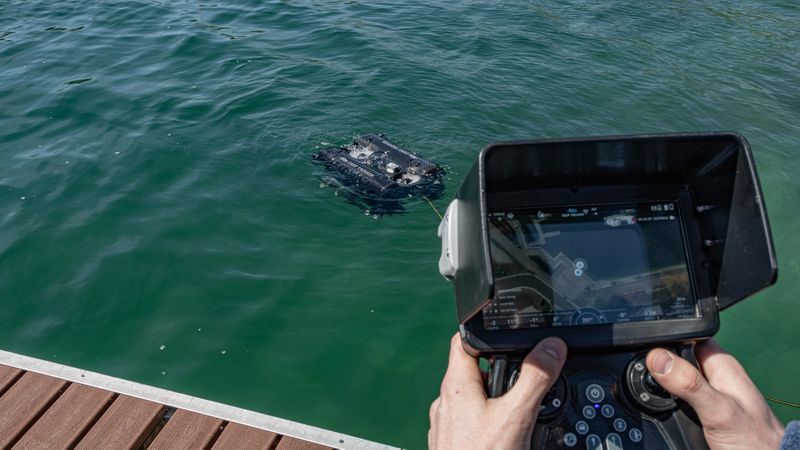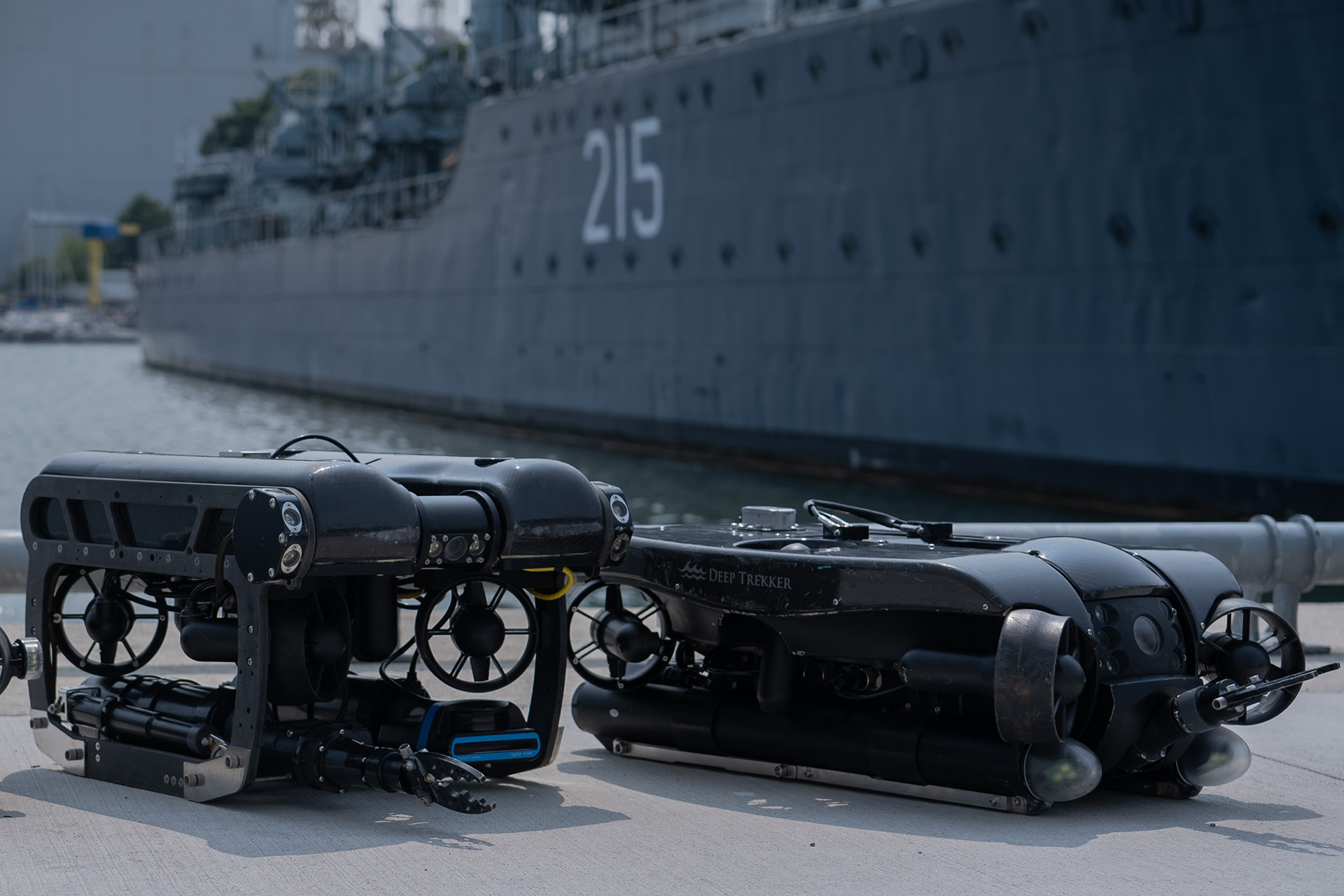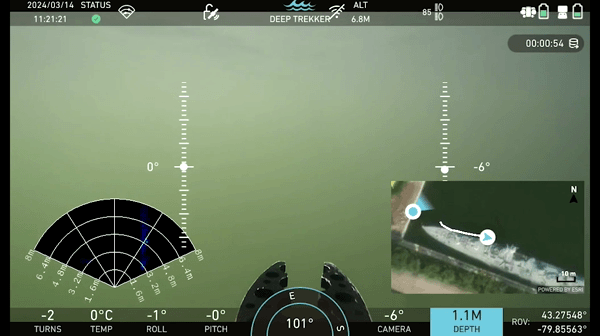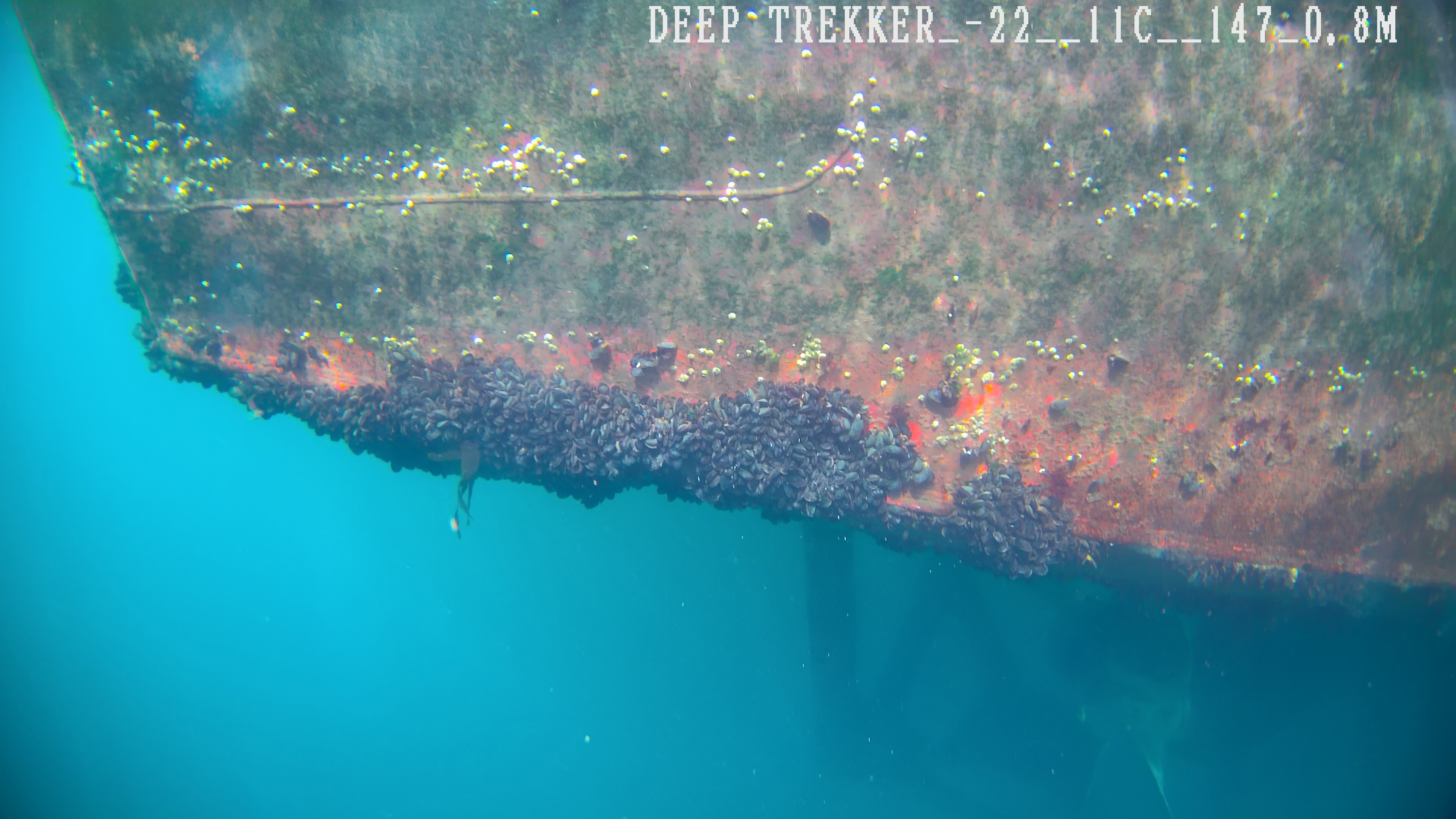Modernizing Vessel Inspections: Dead Reckoning for Mini ROVs
Discover how Deep Trekker's ROV technology transforms underwater navigation, overcoming traditional challenges in underwater positioning.

Operator piloting ROV with Dead Reckoning tracking
This article was first published on
www.deeptrekker.comWhen it comes to inspections in the maritime environment, the status quo has long been marked by challenges that impede efficiency and incur significant costs. Routine vessel inspections, vital for maintaining operational integrity, optimizing fuel efficiency, and ensuring safety underwater, have traditionally relied on divers or drydocking methods, both of which are inherently costly and time-consuming.
The emergence of remotely operated vehicles (ROVs) promises a more accessible and cost-effective alternative, yet their usability has been hindered by the perennial problem of navigation beneath vessels' hulls.
This article provides a comprehensive exploration of Dead Reckoning and the seminal work undertaken by Deep Trekker in mini ROV technology, with a particular emphasis on its potential to transform routine vessel inspections. The focus is on highlighting the implications for fuel efficiency, defect detection, and the cost-effective optimization of vessel maintenance.
This innovative breakthrough was achieved by Deep Trekker’s pioneering work on Dead Reckoning technology. These latest achievements have the potential to advance underwater vessel inspections by providing a practical solution to the long-standing challenge of underwater navigation.

Applications of Dead Reckoning with Underwater Robotics
Beyond just hull inspections, Dead Reckoning finds widespread application in the field of underwater robotics, where autonomous vehicles and ROVs navigate complex underwater environments for various tasks, including oceanographic research, underwater surveys, pipeline maintenance, and search and recovery, to name a few.
In oceanographic research, ROVs equipped with Dead Reckoning systems can gather data on ocean currents, temperature gradients, water quality, and marine life distribution. By continuously updating their positions through Dead Reckoning calculations, ROVs can execute predefined survey patterns, enabling scientists to study ocean dynamics and ecosystem health.
Similarly, in underwater inspections and maintenance operations, ROVs rely on Dead Reckoning to navigate complex underwater structures, such as offshore oil rigs and submerged pipelines. By accurately estimating their positions relative to target objects, ROVs can perform tasks such as visual inspections, structural repairs, and equipment installations with minimal human intervention.
Dead Reckoning also plays a vital role in search and recovery (SAR) missions, where time-critical decisions depend on accurate positional information. Deep Trekker ROVs equipped with Dead Reckoning systems can systematically cover large search areas, narrowing down the search radius based on calculated positions and sensor feedback.
Overall, the integration of Dead Reckoning with underwater robotics facilitates more effective navigation in challenging underwater environments, enabling a wide range of scientific, commercial, industrial, and humanitarian applications.
The Significance of Dead Reckoning in Maritime Inspections
Dead Reckoning is a key component in maritime operations, especially in underwater inspections, as it provides a fundamental means of tracking the position and movement of inspection equipment in underwater environments, such as ROVs. This enables inspectors to navigate, track, and collect data accurately in challenging subaquatic settings.
When combined with other navigation aids and sensors, Dead Reckoning contributes to the safety, efficiency, and effectiveness of maritime inspections, ensuring that they meet their intended objectives.
Here are some key points highlighting the significance of Dead Reckoning in maritime operations:
Navigating Underwater Without GPS or Electronic Aids
Dead Reckoning serves as a valuable alternative for navigation in GPS-denied environments like underwater regions where GPS signals may be obstructed or jammed. In underwater inspection scenarios, GPS signals are unavailable or unreliable due to the water's attenuation of satellite signals. Dead Reckoning can provide positional data when these systems are unavailable, allowing for underwater navigation without the assistance of GPS or optics in underwater environments.
By harnessing a combination of inertial sensors, gyroscopes, accelerometers, and sophisticated algorithms, Dead Reckoning enables ROV operators to maintain accurate spatial awareness and navigate with confidence, irrespective of GPS availability.
Operators can rely on Dead Reckoning’s positional data to guide the ROV along predetermined routes and conduct thorough inspections, all without the need for GPS or optics assistance.
Maximizing Inspection Efficiency with Position Tracking
Dead Reckoning enables inspectors to continuously estimate the position of Deep Trekker ROVs as they move underwater during inspections. This information is critical for ensuring that the inspection covers the intended area. When you know where you are, you know where you have already inspected, and you know where you need to go next. Up until now, there has not been an effective method for position tracking for underwater ROVs near ships.
By integrating various sensors and algorithms, Dead Reckoning provides real-time feedback on the ROV's location, allowing inspectors to maintain control. By employing Dead Reckoning technology, inspectors can monitor the ROV's position relative to predefined waypoints or planned trajectories, ensuring that the inspection remains on course and covers all targeted areas effectively.

"Real-time position tracking enables inspectors to adapt to changing underwater conditions or unexpected obstacles, allowing for dynamic adjustments to the inspection strategy as needed."
By maintaining accurate spatial awareness throughout the inspection process, inspectors can assess underwater assets, identify potential issues, and make informed decisions to optimize maintenance and repair activities.
Enhancing Underwater Safety
When working underwater, safety is a primary concern, both for the ROV operators and any accompanying divers - and knowing the location of the ROV and divers is essential for safety.
Dead Reckoning helps inspectors ensure that ROVs or divers do not stray into hazardous areas, such as underwater structures, shipwrecks, or areas with strong currents. By utilizing Dead Reckoning for tracking the precise location of ROVs relative to underwater structures and currents, potential risks can be identified and avoided, minimizing the likelihood of accidents or damage to equipment.
Optimizing Maintenance Strategies through Data Driven Insights
Positional data obtained through Dead Reckoning improves the quality of inspection data, enabling inspectors to navigate ROVs to specific areas of interest. This targeted approach ensures that inspections focus on the most important areas, reducing the chance of missing essential details and improving data accuracy.

This includes data such as the location of underwater structures, defects, or anomalies, which must be precisely recorded for effective analysis. Higher quality data can lead to more informed decision-making, potentially reducing the need for follow-up inspections that consume additional fuel and resources.
The data collected by ROVs utilizing Dead Reckoning technology provides valuable insights that can optimize vessel maintenance strategies. By accurately documenting hull conditions and identifying areas requiring attention, ROVs allow maintenance teams to prioritize repairs, schedule cleaning operations, and implement proactive maintenance measures.
This data driven approach minimizes downtime, reduces operational costs, and extends the lifespan of vessels, ultimately raising the bar for operational efficiency and profitability.
Fuel Efficiency and Resource Management
Dead Reckoning assists in efficient resource management by helping inspectors monitor the progress of inspections. It helps ROVs identify the optimal times to clean the ship, to ensure that the hull remains clear of biofouling. Fuel efficiency in maritime operations can be dramatically improved by regular inspections and keeping the hull clear of marine growth - which can potentially reduce fuel efficiency by up to 40% by creating drag from the rough surface.
Minimizing fuel consumption not only saves money but also reduces the environmental impact of maritime operations. Dead Reckoning, by ensuring efficient maintenance schedules, contributes to sustainability efforts by reducing emissions associated with fuel burning.

Integration of Dead Reckoning with Advanced Sensor Technologies
Dead Reckoning technology is often integrated with advanced sensor technologies to further enhance the capabilities of ROVs during vessel inspections. Deep Trekker’s innovative Sensor Fusion algorithms is a great example of this.
Sensors such as acoustic positioning systems, imaging sonars, and 3D mapping cameras complement Dead Reckoning by providing additional spatial awareness and environmental data.
This integration enables ROVs to navigate complex underwater environments more effectively and capture comprehensive inspection data for thorough analysis and decision-making.
Future Prospects and Innovations in ROV-based Vessel Inspections
Dead Reckoning is a fundamental navigation technique that ROVs and underwater vehicles use to estimate their position and navigate in GPS-denied or challenging environments. While it provides continuous position estimates, it's important to combine with other sensor data and correction methods to maintain accuracy, especially in dynamic underwater conditions.
In the maritime industry where efficiency, accuracy, and cost-effectiveness are critical to operations, Deep Trekker's Dead Reckoning technology stands as an example of this innovation's potential to reshape long standing industry practices and overcome the historical challenges of underwater navigation.
"The ongoing advancements in ROV technology, coupled with the continued refinement of Dead Reckoning algorithms, point to an exciting future for vessel inspections."
Innovations such as autonomous navigation, machine learning algorithms, and advanced sensor fusion techniques promise to further enhance the capabilities of ROVs for conducting comprehensive and efficient inspections.
As these technologies continue to evolve, ROVs equipped with Dead Reckoning will play an increasingly prominent role in maintaining vessel integrity and ensuring maritime safety in the years to come.
The Deep Trekker Advantage
Deep Trekker ROVs, engineered with rugged industrial-grade materials, are designed for versatility and durability. They offer immediate deployment and a comprehensive variety of advanced features. These ROVs are highly portable and quick to set up, featuring powerful LED lighting, a live 4K video feed, and up to 360-degree field of view, imaging sonar, and flexible sampling tools.
Our experienced team is at your service to offer expert guidance for a wide spectrum of applications, ranging from inspecting hull vessels to water tanks to conducting underwater assessments across various industries. We ensure tailor-made solutions that precisely match your specific requirements. When you're prepared to acquire your Deep Trekker ROV, don't hesitate to get in touch with us for a personalized quote.